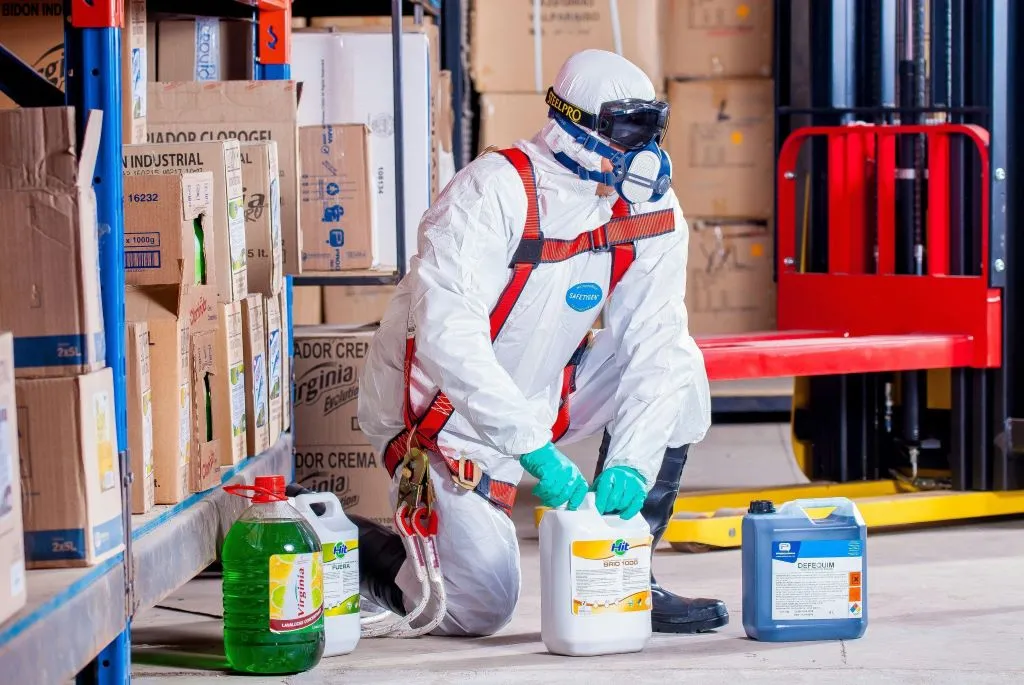- Home
- News Details
News Details

EPA Finalizes Rule to Protect Workers from Carbon Tetrachloride Exposure
2024-12-20 Reference source : Environmental Protection Agency (US EPA)
Chemical control act Chemical industry Restricted use US TSCA United States Hydrofluorocarbons HFCs Chemical Safety Product Safety USA
On December 11, 2024, the U.S. Environmental Protection Agency (EPA) finalized a new rule to protect workers from carbon tetrachloride (CTC), a chemical linked to liver toxicity, cancer, brain tumors, and adrenal gland tumors. The rule mandates stringent worker safety programs and bans certain uses of CTC, in line with President Biden’s Cancer Moonshot initiative to combat cancer.
This is the fifth risk management rule under the bipartisan 2016 Toxic Substances Control Act (TSCA) amendments, marking a significant step forward for chemical safety after years of insufficient protection measures.
Carbon Tetrachloride
Carbon tetrachloride (CASRN: 56-23-5) is an industrial solvent used in the production of refrigerants, aerosol propellants, foam-blowing agents, pesticides, cleaning fluids, degreasers, fire extinguishers, and spot removers, etc. Its use in consumer products was banned in 1970 by the U.S. Consumer Product Safety Commission. Production of CTC for most domestic applications, excluding chemical manufacturing, was phased out in 1996 under the Montreal Protocol and the Clean Air Act.
CTC remains essential for the production of chemicals with low-global-warming-potential, supporting the goals of the American Innovation and Manufacturing Act of 2020 (AIM Act) and the Kigali Amendment to the Montreal Protocol.
Details on the Final Rule:
- The final rule mandates protections for workers in most CTC uses being continued. Some uses that were initially prohibited will be permitted under the final rule, as public comments and evidence showed these uses were ongoing and that workplace safeguards could be applied.
- Under the Workplace Chemical Protection Program, which includes inhalation limits and skin protection measures, the following uses of CTC will be allowed to continue:
- Incorporation into formulations, mixtures or reaction products in agricultural products manufacturing, vinyl chloride manufacturing (originally proposed to be prohibited), and other basic organic and inorganic chemical manufacturing.
- Repackaging for use as a laboratory chemical.
- Use as a processing aid to manufacture agricultural products.
- Use as a processing aid to manufacture vinyl chloride (originally proposed to be prohibited).
- Use in the elimination of nitrogen trichloride in the production of chlorine and caustic soda and the recovery of chlorine in tail gas from the production of chlorine.
- Import, recycling, disposal and domestic manufacture of CTC.
- Processing as a reactant in the production of hydrochlorofluorocarbons (HCFCs), hydrofluorocarbons (HFCs), hydrofluoroolefins (HFOs) and perchloroethylene (PCE).
- In response to public feedback, companies now have 36 months to implement the Workplace Chemical Protection Program, allowing time to refine test methods for inhalation exposure limits.
- Laboratory use of CTC will require workplace controls that are now better aligned with Occupational Safety and Health Administration (OSHA) standards.
- The final rule also requires owners to ensure that engineering controls do not increase CTC emissions outside the facility, thereby protecting surrounding communities.
We acknowledge that the above information has been compiled from Environmental Protection Agency (US EPA).
Global Product Compliance (GPC) specializes in Global Regulatory Compliance Solutions across sectors
globally. SSS Europe, a familiar name in chemical regulatory and compliance services now formally belongs
under the umbrella of GPC Holding Sweden.
Since 2008, we have emerged as one of the leading names among Global Regulatory Compliance Service
Providers with Representation services in Europe, Asia and Middle East for respective chemical
regulations.

 Twitter
Twitter
